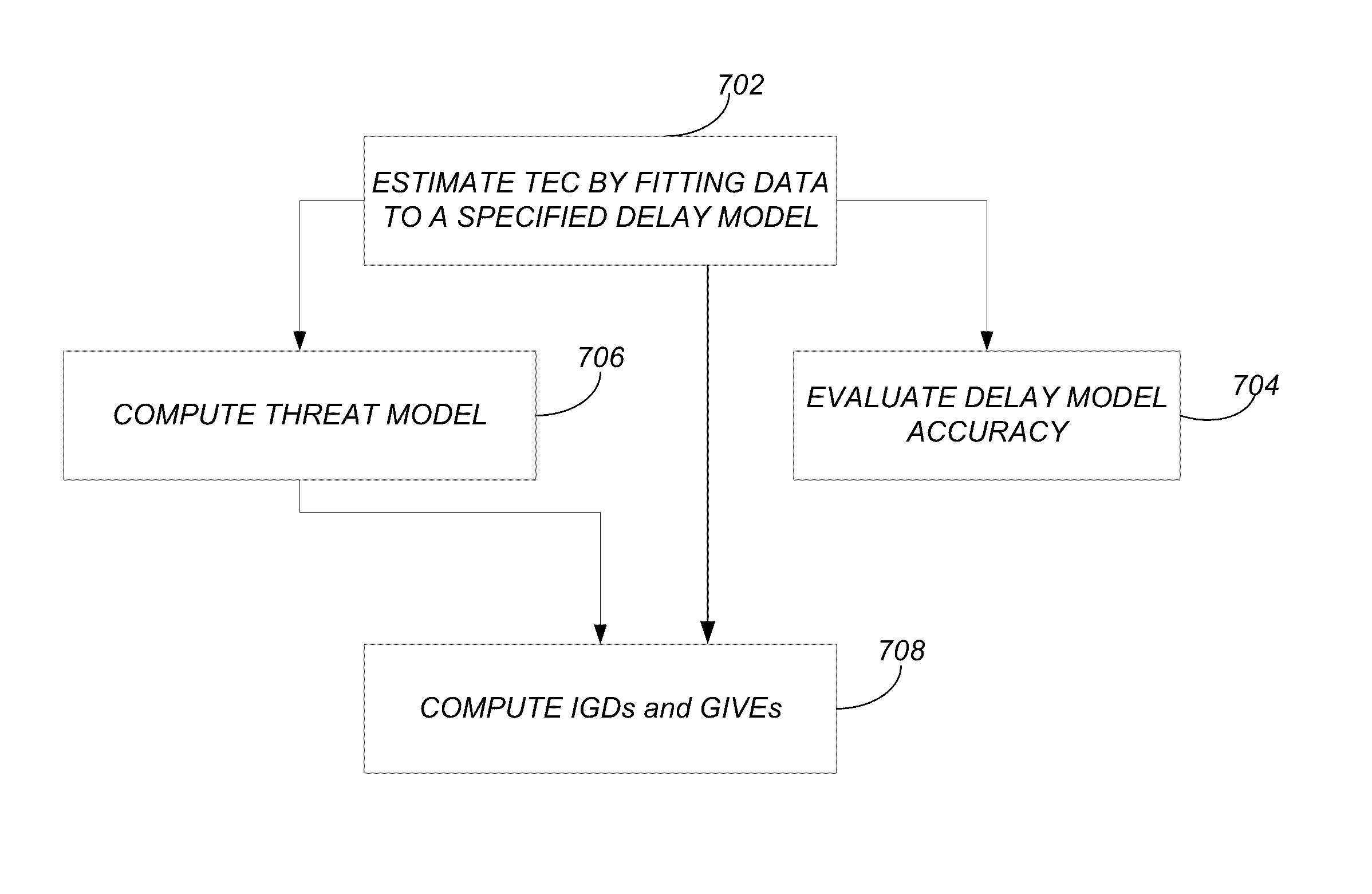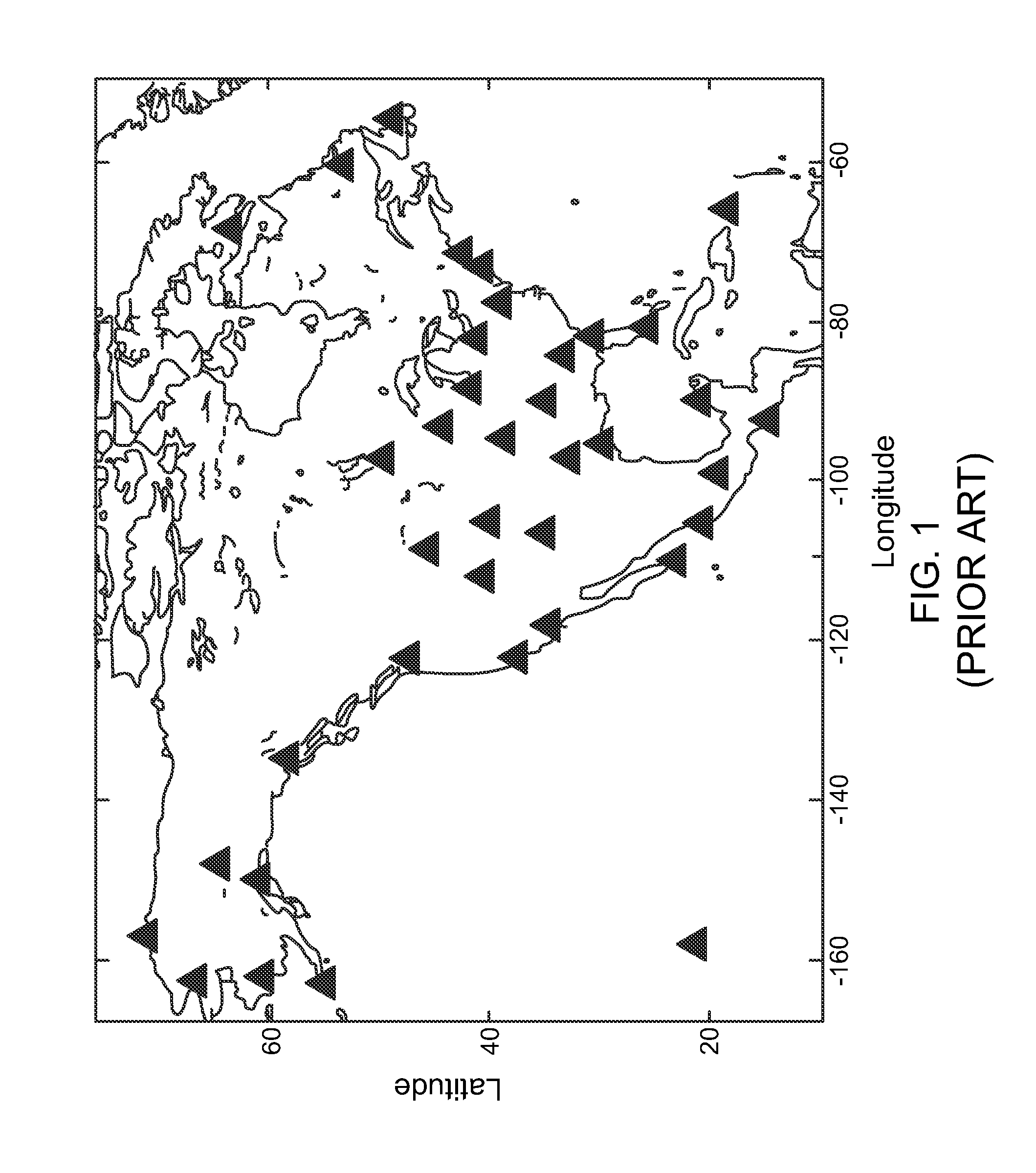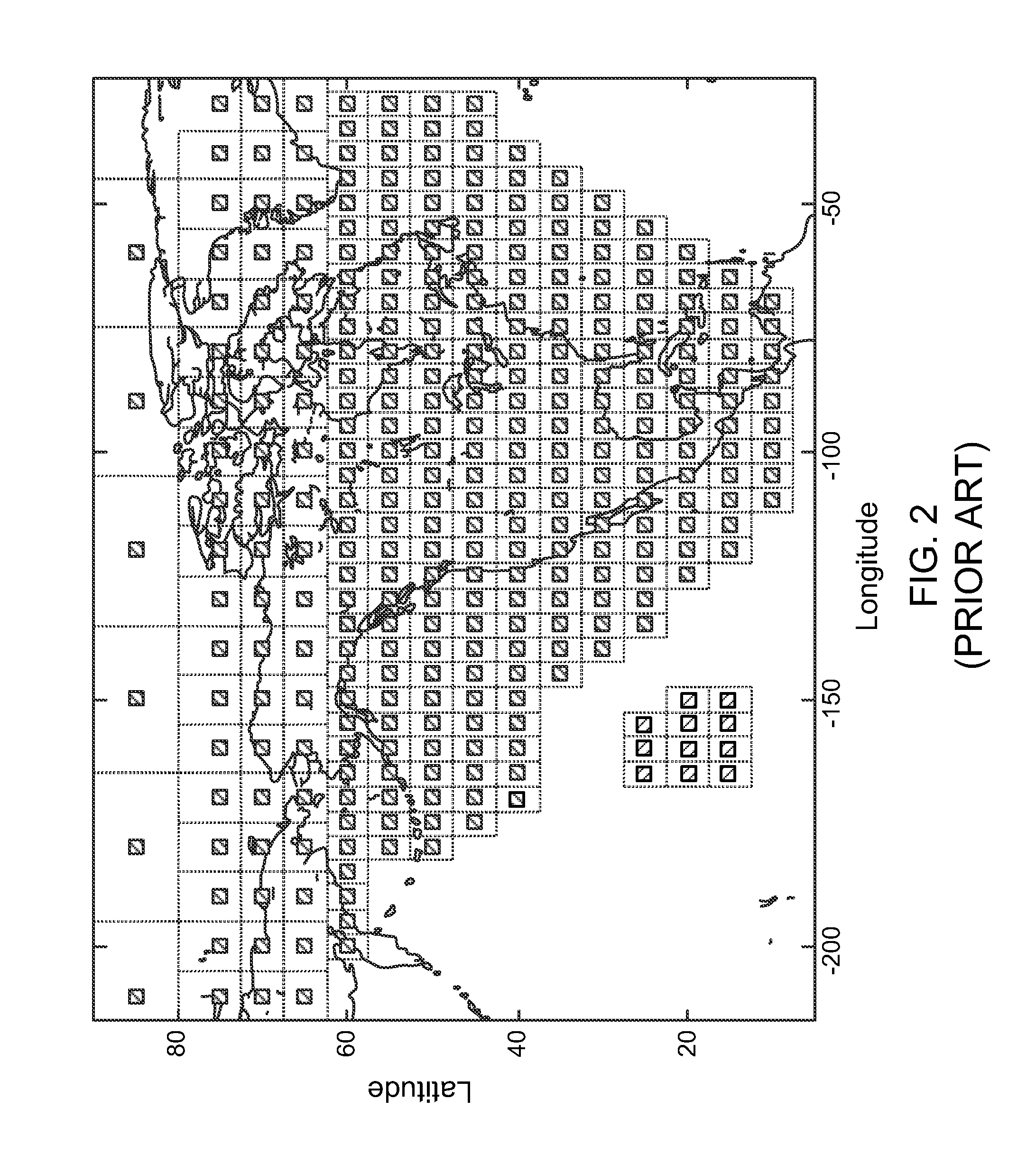Ionospheric slant total electron content analysis using global positioning system based estimation
a global positioning system and total electron content technology, applied in the field of ionospheric modeling, can solve the problems of crude approximation introducing errors into delay estimation, the level of service is not available to the user, and the ionospheric delay remains the largest source of positioning error. achieve the effect of improving the waas availability
- Summary
- Abstract
- Description
- Claims
- Application Information
AI Technical Summary
Benefits of technology
Problems solved by technology
Method used
Image
Examples
Embodiment Construction
[0030]In the following description, reference is made to the accompanying drawings which form a part hereof, and, by way of illustration, several embodiments of the present invention are shown. It is understood that other embodiments may be utilized and structural changes may be made without departing from the scope of the present invention.
Hardware Environment
[0031]FIG. 4 is an exemplary hardware and software environment 400 used to implement one or more embodiments of the invention. The hardware and software environment includes a computer 402 and may include peripherals. Computer 402 may be a user / client computer, server computer, or may be a database computer. The computer 402 comprises a general purpose hardware processor 404A and / or a special purpose hardware processor 404B (hereinafter alternatively collectively referred to as processor 404) and a memory 406, such as random access memory (RAM). The computer 402 may be coupled to, and / or integrated with, other devices, includi...
PUM
 Login to View More
Login to View More Abstract
Description
Claims
Application Information
 Login to View More
Login to View More - R&D
- Intellectual Property
- Life Sciences
- Materials
- Tech Scout
- Unparalleled Data Quality
- Higher Quality Content
- 60% Fewer Hallucinations
Browse by: Latest US Patents, China's latest patents, Technical Efficacy Thesaurus, Application Domain, Technology Topic, Popular Technical Reports.
© 2025 PatSnap. All rights reserved.Legal|Privacy policy|Modern Slavery Act Transparency Statement|Sitemap|About US| Contact US: help@patsnap.com



